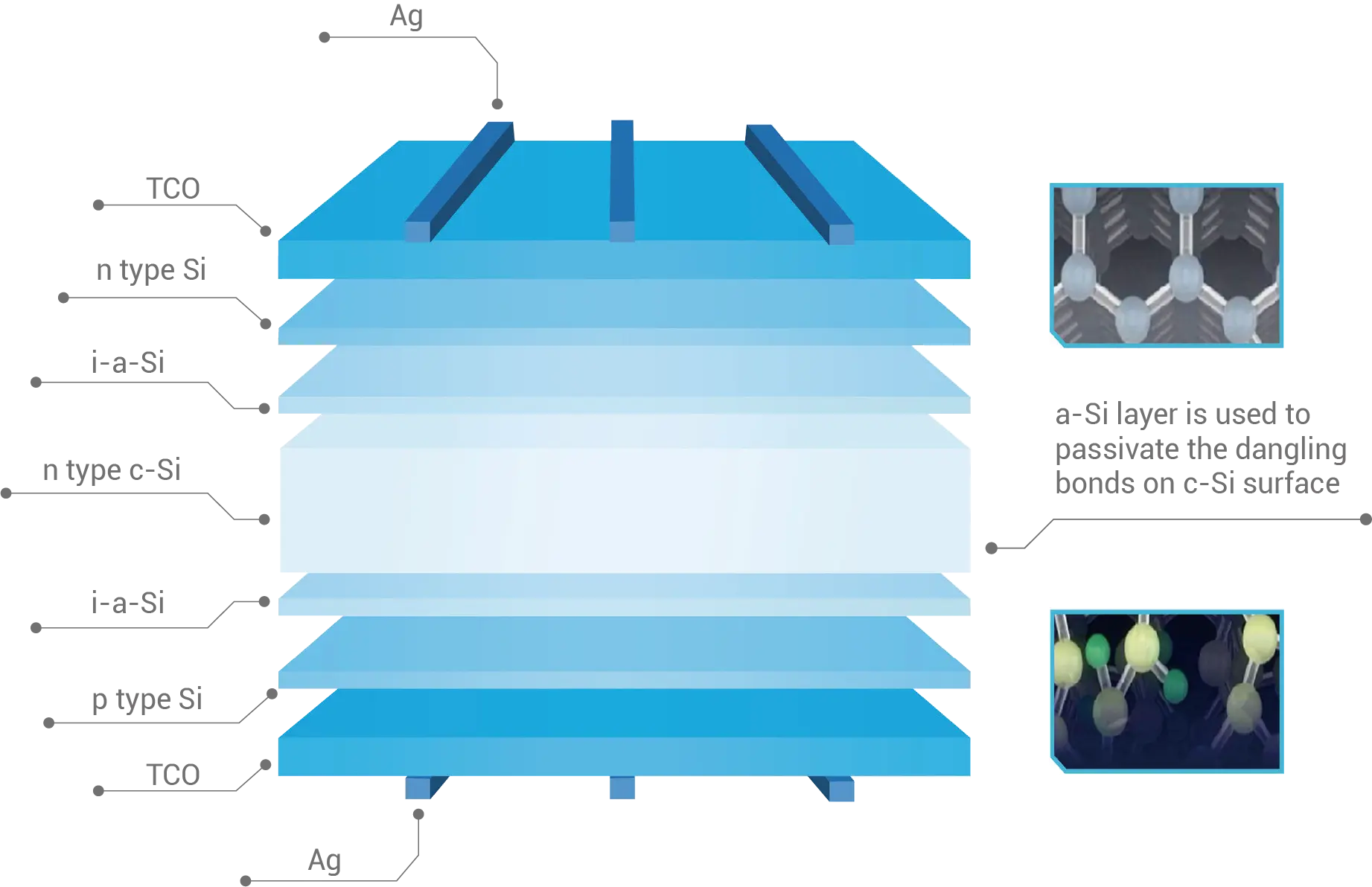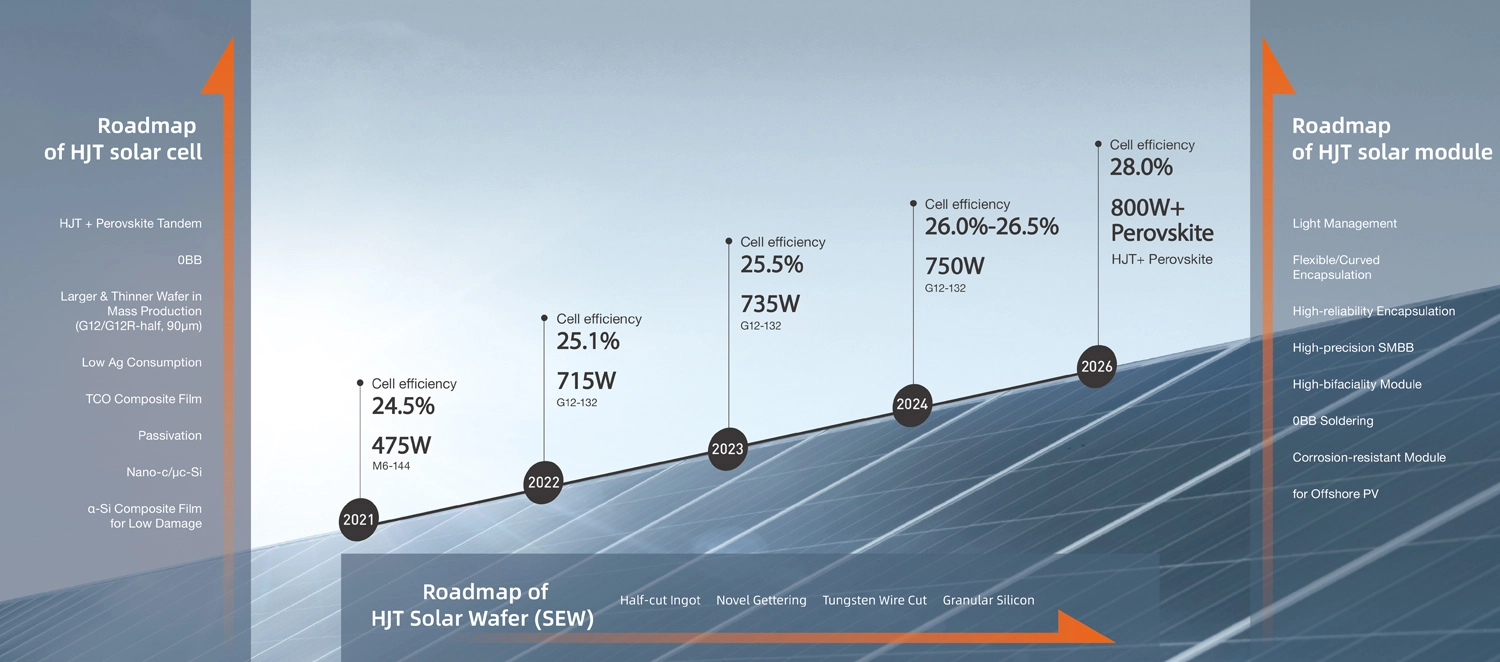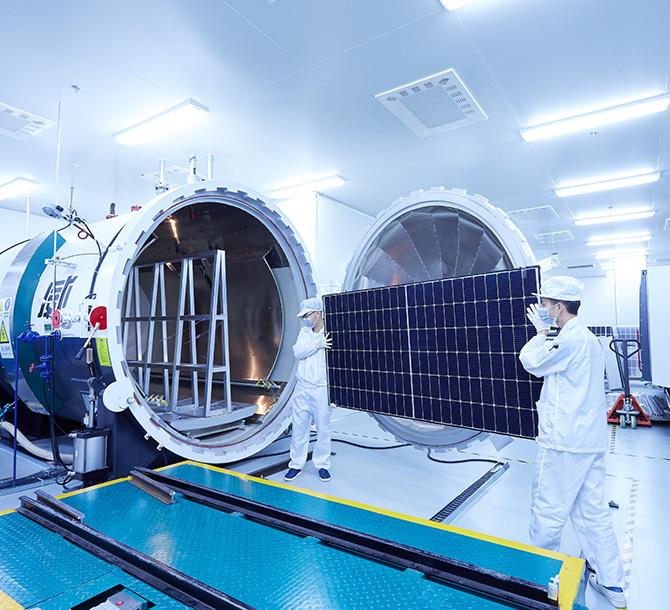en
Heterojunction with intrinsic thin-layer, known as HJT, is a N-type bifacial solar cell technology, which uses N-type monocrystalline silicon as a substratum and deposits silicon-based thin films with different characteristics and transparent conductive films on the front and rear surfaces.
HJT solar cell combines the advantages of crystalline silicon and amorphous silicon thin-film technologies. With excellent photoabsorption and passivation effects, HJT has outstanding efficiency and performance, which make HJT solar panel as one of the technologies to improve the conversion rate and power output to the highest level, and also represent the trend of the new generation of solar cell platform technology.
What is HJT technology? Heterojunction technology (HJT) is a N-type bifacial solar cell technology, by leveraging N-type monocrystalline silicon as a substratum and depositing silicon-based thin films with different characteristics and transparent conductive films on the front and rear surfaces respectively.
Combining with the benefits of crystalline silicon and amorphous silicon thin-fim technologies, HJT technology has excellent photoabsorption and passivation effects, as well as outstanding efficiency and performance. HJT panels are one of the technologies to improve the conversion rate and power output to the highest level, also represent the trend of the new generation of solar cell platform technology.

Huasun will gradually realize the technical iterations of HJT solar cell from 3.0 (double side μc-Si) , 4.0 (double side μc-si with Cu plating) , 5.0 (full back-contact) to heterojunction-perovskite tandem cells, and eventually reach the efficiency of 28% in mass production. The increase in efficiency will further reduce the LCOE. Combining with the continuous decrease in the cost of silicon wafer, metallization, TCO, equipment and production, HJT will truly become the new generation of mainstream solar cell technology.

Huasun is planning to fully apply silver-coated copper paste combined with busbar-free technology in 2023. In 2024, through the application of copper plating technology, the silver consumption per watt will be reduced to 0 mg.
Huasun aims to achieve 800W module power output and 28% cell efficiency by 2025 through the superposition of heterojunction and perovskite.

Taking HJT as the core, Huasun keeps enhancing clients' confidence of solar energy's future via higher product efficiency, more stable power generation performance, better quality assurance and platform-based technology expansion capabilities.
After more than two years of unremitting efforts, Huasun has not only achieved the leap from HJT 1.0 (double side α-Si) to 2.0 (single side μc-Si) in technical terms, but also transformed the technical results into mass production, and become the world's largest HJT manufacturer, with the capability of providing high-efficient HJT solar products in a long-term and stable manner to the market which is in high demand.
At present, the highest efficiency of Huasun HJT solar cells in mass production has reached 26.5%, as in the leading position of PV industry. With the premise of ensuring cell efficiency, the company is constantly exploring the methods of cost reduction of HJT solar cells by taking measures of thinning the silicon wafer and introducing silve & copper paste, in order to accelerate the pace of industrialization and marketization of this high-efficient solar cell technology.